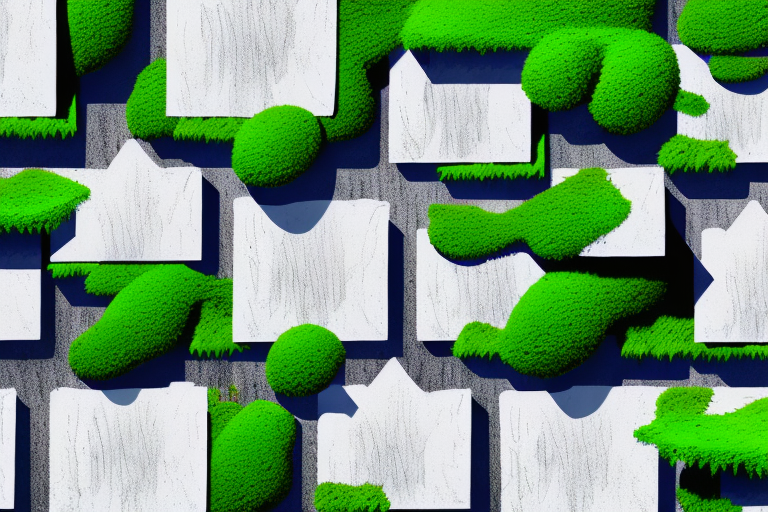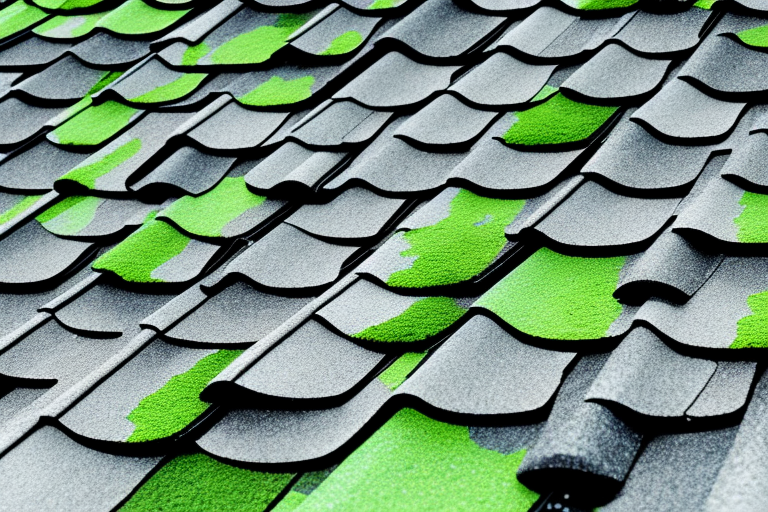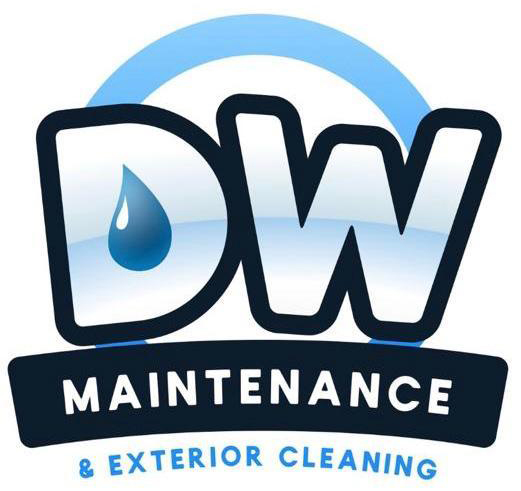Keeping your home’s roof clean and free of debris is an essential task for homeowners. Moss buildup on your roof can lead to damage if left unchecked. In this article, DW Maintenance & Exterior Cleaning will discuss why moss removal is important and how to prepare for it. Then, we’ll outline a few different methods to remove moss, including chemical solutions, pressure washing, and hand scraping.
Why Moss Removal is Important
There are a few reasons why it is essential to remove moss from your roof tiles. First and foremost, moss can cause damage to your roof if left untreated. As it grows, the moss can work its way underneath shingles and cause them to lift. This can lead to leaks, which can further damage the structure of your roof.
Another reason to remove moss from your roof tiles is for curb appeal. A moss-covered roof can make your home look unkempt and unsightly. Cleaning your roof will help keep your home looking its best and ensure it remains in good repair.
Finally, regular moss removal can help extend the life of your roof by preventing damage and encouraging proper maintenance.
Preventing Damage to Roof Tiles
The best way to prevent damage to your roof tiles is to remove moss as soon as you notice it. Moss growth can occur in both damp and shady areas, making it essential to keep these areas clear of debris to prevent the growth of moss and other organisms.
One way to prevent moss growth is to trim back any overhanging branches or foliage that may be blocking sunlight from reaching your roof. This will help keep the area dry and prevent moss from taking hold.
Additionally, you should consider investing in a good quality roof underlayment. This will help protect your roof tiles from moisture damage and prevent the growth of moss and other plants. A professional roofing contractor can help you choose the best underlayment for your specific needs.
Maintaining Curb Appeal
Keeping your home looking its best is essential for maintaining curb appeal. Regular moss removal can help keep your roof looking clean and fresh, adding to the overall appearance of your home. In addition to cleaning your roof, you should also consider pressure washing your home’s exterior to remove any dirt or grime buildup.
Another way to enhance curb appeal is to add some colourful plants or flowers to your landscaping. This will help draw attention away from your roof and towards the beautiful plants and flowers surrounding your home.
Extending the Life of Your Roof
Regular moss removal can help extend the life of your roof by preventing damage from occurring and encouraging proper maintenance. Removing moss and other debris from your roof also allows you to inspect the shingles for any damage or wear and tear that may require repair.
Another way to extend the life of your roof is to ensure proper ventilation. Proper ventilation helps regulate the temperature in your attic, preventing excess moisture buildup that can lead to moss growth and other damage.
Regular roof inspections are also important for maintaining the health of your roof. A professional roofing contractor can identify any potential issues and make necessary repairs before they become major problems.
Overall, moss removal is an important part of maintaining the health and appearance of your roof. By taking the necessary steps to prevent moss growth and regularly cleaning your roof, you can extend the life of your roof and keep your home looking beautiful for years to come.
Identifying Moss on Your Roof

How to Clean Moss off Roof Tiles 2
Before you can begin removing moss from your roof, you need to identify whether there is any growth and, if so, what type of moss it is. Identifying moss on your roof is important because it can cause serious damage if left untreated. Moss can trap moisture on your roof, which can lead to rotting and decay of your shingles or tiles. Here are some common types of moss and the signs of moss growth:
Common Types of Moss
- Acrocarpous Moss – grows in clumps, resembling tiny bushes. This type of moss is common in drier climates and is usually found on roofs with steeper slopes.
- Pleurocarpous Moss – grows in a carpet-like fashion and can cover large areas of a roof. This type of moss is common in wetter climates and is usually found on roofs with flatter slopes.
Signs of Moss Growth
- Visible dark green or black patches on your roof. These patches can be small or large and can be found on any type of roof.
- Increased moisture on your roof or in your gutters. Moss thrives in moist environments, so if you notice an increase in moisture, there may be moss growing on your roof.
- Warped, lifted, or damaged shingles. Moss can grow under your shingles or tiles, causing them to warp or lift. This can lead to leaks and other damage to your roof.
If you notice any of these signs, it’s important to take action to remove the moss from your roof. Leaving moss to grow can cause serious damage to your roof and can be costly to repair. There are several methods for removing moss from your roof, including using a moss killer or hiring a professional roof cleaning service.
It’s also important to take preventative measures to keep moss from growing on your roof in the first place. This can include trimming overhanging branches to allow more sunlight to reach your roof, cleaning your gutters regularly to prevent moisture buildup, and installing zinc or copper strips on your roof to prevent moss growth.
Preparing for Moss Removal

How to Clean Moss off Roof Tiles 3
While moss may give your home a natural look, it can also cause damage to your roof over time. It’s important to remove moss regularly to prevent it from growing and causing damage. Here are some tips to help you prepare for moss removal:
Safety Precautions
Removing moss can be dangerous, especially if you are working on a sloped roof. To protect yourself, it’s essential to take proper safety precautions. Consider the following:
- Wear slip-resistant shoes with a good grip to prevent falls
- Use a sturdy ladder to access the roof safely
- Wear gloves to protect your hands from the chemicals and abrasive materials used in moss removal
- Use eye protection to prevent debris from getting in your eyes
It’s also important to have someone with you while you work on the roof to ensure your safety.
Gathering Necessary Tools and Materials
Before you begin removing moss, you’ll need a few tools and materials. Here are some basics:
- A hose or pressure washer to remove debris and moss
- A stiff-bristled brush or scraper to remove moss and algae
- A chemical solution for moss removal, if desired
When choosing a chemical solution, make sure to read the label carefully and follow the instructions to avoid damaging your roof.
Choosing the Right Time for Cleaning
It’s important to choose the right time for cleaning your roof tiles. Try to pick a dry, sunny day to ensure that your roof tiles will dry out quickly after cleaning. Avoid cleaning your roof during rainy weather to prevent dirt and debris from accumulating on the newly cleaned surface.
Additionally, it’s best to clean your roof during the fall or winter months when there is less sunlight and moisture, as this will prevent moss from growing back quickly.
By following these tips and taking the necessary precautions, you can safely and effectively remove moss from your roof and prevent damage to your home.
Methods for Removing Moss

How to clean moss off roof tiles 4
Moss can be a pesky problem for homeowners, especially those living in areas with high levels of moisture. Not only can it make your roof look unsightly, but it can also cause damage to your roof tiles over time. Fortunately, there are several methods for removing moss from your roof. Let’s take a closer look at some of the most effective methods:
Chemical Solutions
Chemical solutions can be highly effective for removing moss from your roof. These solutions are designed to kill moss and prevent it from regrowing. However, it’s important to choose a product that is safe for the environment. Look for solutions that are biodegradable and won’t harm plants or animals. It’s also important to follow the instructions carefully to avoid damaging your roof tiles or other surfaces.
One popular chemical solution for removing moss is potassium salts of fatty acids. This solution works by drying out the moss and preventing it from regrowing. It’s important to note that this solution can take several weeks to be fully effective, so be patient and allow it time to work.
Pressure Washing
Pressure washing is another effective method for removing moss from your roof. A pressure washer can be used to blast away moss and debris without the need for harsh chemicals. However, it’s important to use caution when pressure washing your roof. High-pressure water can be damaging to roof tiles and can even cause leaks if not done properly.
If you decide to use a pressure washer, be sure to use a low-pressure setting and stand at least six feet away from your roof. It’s also a good idea to hire a professional to do the job, as they will have the equipment and experience necessary to do it safely and effectively.
Hand Scraping
For smaller areas of moss growth, hand scraping can be an effective method for removal. A stiff-bristled brush or scraper can be used to remove moss and debris without causing damage to your roof tiles. However, this method can be time-consuming and labor-intensive.
If you decide to use this method, be sure to wear gloves and safety goggles to protect yourself. It’s also important to be gentle when scraping to avoid damaging your roof tiles.
Overall, there are several effective methods for removing moss from your roof. Whether you choose a chemical solution, pressure washing, or hand scraping, be sure to take the necessary precautions to protect yourself and your roof tiles. With a little effort, you can keep your roof looking clean and moss-free for years to come.
Conclusion
Moss removal is an important task that should not be ignored. Moss growth on your roof can cause damage, reduce curb appeal, and decrease the life of your roof. By following the steps outlined in this article, you can prepare for moss removal, identify different types of moss, and choose the best removal method for your situation. With a little effort, you can keep your roof looking clean and healthy for years to come.

